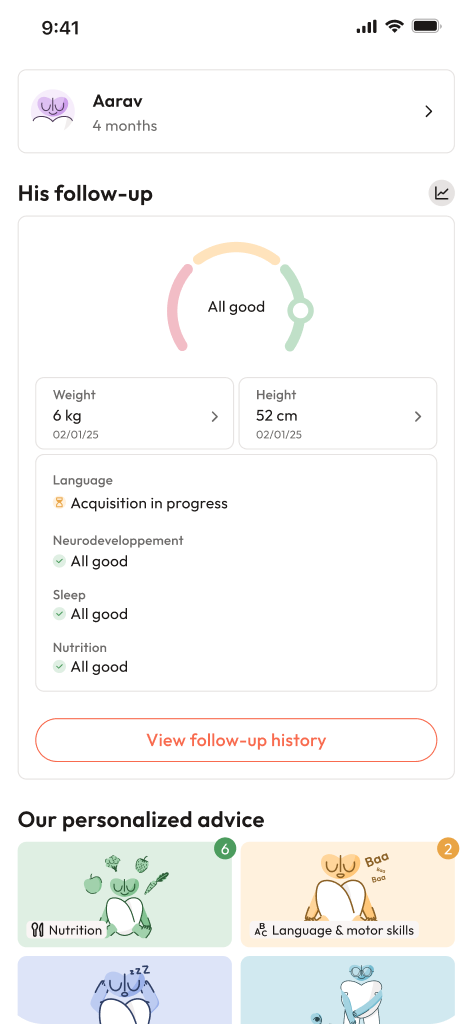For many parents, anxiously waiting those few minutes for a result that shapes hopes and plans, a negative pregnancy test can bring a wave of confusion, disappointment, or relief—sometimes all at once. Breasts may feel heavy, the cycle plays hide and seek, perhaps nausea lingers. Yet, that single line seems final. Or is it? In the midst of swirling emotions, clarity becomes a lifeline: why do negative results occur? When is a second test wise? What if the body and the test do not seem to agree? Here’s an in-depth, empathetic look at what a negative pregnancy test can mean, why these results are not always the final answer, and how science, practical tips, and a touch of patience can help untangle the uncertainty.
How Pregnancy Tests Work: The Science Behind the Result
Pregnancy tests—whether in your bathroom or in a lab—look for human chorionic gonadotropin (hCG), a hormone the body generates soon after embryo implantation begins. This hormone’s appearance is not instantaneous. After fertilization, the embryo quietly journeys and then settles into the uterine lining, triggering hCG production. First, the hormone shows up in the bloodstream, then gets filtered into urine.
But, here comes the twist: hCG levels don’t leap up immediately after conception. In the earliest days, their rise is subtle. Average implantation occurs 8–10 days after fertilization, sometimes veering early or stretching late. Because hCG usually doubles every 37 to 48 hours, a test taken today might whisper “no” while a retest in two days could boldly affirm “yes.” Timing is everything, and in these early stages, it is the hormone’s silent build-up that can lead to a premature negative pregnancy test.
Home Pregnancy Test vs. Blood Test: What Matters Most in Early Detection?
Home Urine Test
Most home pregnancy test kits are designed for ease, not just accuracy. Using a strip or digital format, they respond to the threshold levels of hCG—typically 20 to 25 mIU/mL in standard versions, while early detection brands may pick up as low as 6 to 7 mIU/mL. Yet, even these super-sensitive tests hinge on the hormone’s presence and its concentration in the first-morning urine. The latter is always recommended because, after a night’s rest, urine is more concentrated, making it easier for the test to pick up subtle signals.
Drinking large amounts of water (or even mild diuretics) before sampling can dilute this signal, leading to a false negative. If instructions are missed, test expired, or sample is collected at the wrong time of day, a negative pregnancy test may not reflect the body’s reality.
Blood Test
A laboratory quantitative blood hCG test is more sensitive, reporting the exact level of hCG rather than just “pregnant” or “not pregnant.” Results in the ‘gray zone’ (5–25 mIU/mL) may prompt a repeat test after 48 hours to observe the progression—early pregnancy typically presents a doubling trend. This route brings more clarity when symptoms persist, cycles are irregular, or if fertility treatments have recently been administered.
Negative Pregnancy Test: True Negative or False Negative?
There is an undeniable jolt when expectations meet a negative pregnancy test—but not all negatives paint the same picture. Let’s break down the science:
- True Negative: No pregnancy; hCG not present in detectable amounts.
- False Negative: Pregnancy exists but hCG is either not high enough, urine is too dilute, or test sensitivity is inadequate.
Basic rule—tests only capture the situation at that precise moment. Tomorrow’s answer might differ. A barely-there faint line? That’s an ambiguous message. Sometimes, it is simply too early, or the sample too diluted. Reading the test too soon (before the specified time window) or too late (after the “evaporation” period) also misleads—many have squinted at shadowy lines wondering what to believe.
Timing Your Test: Avoiding the Most Frequent Pitfalls
No surprise—testing too soon ranks as the commonest reason for a negative pregnancy test. Cycle regularity plays a major role. For regular cycles, testing on the day of the expected period or just after greatly improves accuracy. Irregular cycles, however, muddy the waters. If ovulation occurred late, even a hCG-sensitive test might not register a true result.
Practical advice:
- Preferably use first-morning urine—less diluted, more reliable.
- Avoid large fluid intake in the hour prior to testing.
- If a period remains missing, wait 48 to 72 hours and retest; the body may just need time to catch up.
- For those in fertility protocols or experiencing persistent, strong symptoms, a blood test is prudent.
Why Does a Negative Pregnancy Test Happen? Exploring the Underlying Reasons
Multiple factors might blend to produce a negative pregnancy test, even in the presence of symptoms:
- Timing: Implantation and subsequent hCG rise can be delayed, catching the test mid-transition.
- Dilution: Was there a big glass of water before testing? That matters.
- Test Reliability: Expiry dates, improper storage, and even manufacturing differences can create variation.
- User Mistakes: Reading window too soon/too late, incorrect sample handling.
- Misinterpretation: Was the color band an evaporation line, or a true signal?
- Medical Factors: Early “chemical pregnancy” (where hCG briefly surges and drops), ectopic pregnancy (absent or slow-rising hCG), and external hormonal influences (like medicines containing hCG, polycystic ovary syndrome, thyroid dysfunction).
- Other factors: Anovulatory cycles, stress, sleep pattern disruption, or minor infections may mimic pregnancy symptoms without an actual conception.
A negative pregnancy test is not a definitive “not pregnant” if administered too early or under less than optimal conditions.
When Symptoms Say “Yes,” But the Test Says “No”
Some days, the story your body tells and the response the test gives seem completely at odds: persistent breast tenderness, mild feverish feeling, unexplained fatigue, and yet, a lonely line in the test window. In these cases, two major possibilities arise:
- hCG is still invisibly low for detection—waiting 48–72 hours can change the answer.
- Symptoms have roots elsewhere: hormonal shift, stress, anovulatory cycle, sleep deficit, minor viral infection.
If symptoms worsen or persist, or if there is a second negative pregnancy test but the period does not start, a blood test becomes the compass pointing towards clarity.
Understanding False Negatives, Their Frequency, and Confirmatory Steps
A false negative can sting, especially if hope is strong. Statistically, most negative pregnancy tests turn into accurate answers as the days pass—but on the first day of a missed period, the incidence of false negatives can be about 10–20%. Each day thereafter, reliability increases dramatically.
How to achieve confirmation:
- The quantitative blood hCG test provides a number, and repeating it after 48 hours tracks the hormone’s evolution.
- Sometimes, an early transvaginal ultrasound is needed—if hCG reaches levels of 1500–2000 mIU/mL, an intrauterine gestational sac should be visible. If absent, closer monitoring is warranted.
Extra Tests and Thresholds to Keep in Mind
- Blood hCG:
- < 5 mIU/mL—unlikely to be pregnant.
- 5–25 mIU/mL—repeat test, the “watch and wait zone.”
- > 25 mIU/mL—track changes over time to differentiate developing pregnancy from other conditions.
- Pelvic/transvaginal ultrasound:
- Gestational sac around 4.5–5 weeks after the last period.
- Cardiac activity around 6 weeks as hCG peaks.
- Ultrasound becomes indispensable when abnormal symptoms or ectopic pregnancy is a concern.
Spotting Ectopic Pregnancy: When Urgency Guides the Response
Sometimes, a negative pregnancy test or faint positive, coupled with one-sided pelvic pain, unusual bleeding, faintness, or increasing discomfort, flags a possible ectopic pregnancy (embryo implanting outside the womb). Here, rapid medical review is essential—not only does it confirm the diagnosis, but it shields long-term health. In these settings, slow or plateauing hCG and absent intrauterine sac on ultrasound signal the need for swift, focused care.
Steps to Take After a Negative Pregnancy Test
Practical moves for uncertain times:
- Retest after 48–72 hours, and always use first-morning urine.
- Consider a different test brand or a digital device for clearer results.
- If symptoms deepen or if you are following a fertility protocol, proceed with a quantitative blood hCG.
- Check test expiry dates and follow instructions every time, avoiding user-induced errors.
- Seek medical review for pain, bleeding, or faintness; early intervention removes doubts and ensures safety.
Emotional Impact: Understanding, Coping, and Moving Forward
Anticipation, anxiety, even heartache—receiving a negative pregnancy test is more than just a technical outcome. Naming emotions brings relief. Setting a simple timeline for a repeat test or a scheduled blood draw restores some sense of control. Persistent worry? Professional guidance—whether counseling or medical support—often reshapes experience into something more manageable. Remember: a negative pregnancy test is just a moment’s snapshot, not a sweeping verdict. Sometimes, only time and science can bring everything into focus.
When to Reach Out to a Medical Professional
Do not hesitate to consult for persistent delays, pelvic pain, unexpected bleeding, faintness, or symptoms that intensify despite repeated negative pregnancy tests. In complex or distressing cases, the combined power of quantitative blood hCG, ultrasound, and a tailored hormonal evaluation lifts uncertainty and informs future steps.
Ectopic pregnancy and chemical pregnancy each have their own management approaches, suited to your health, needs, and hopes.
Key Takeaways
- The reliability of a negative pregnancy test increases when performed a few days after the missed period, with first-morning urine, and careful attention to instructions.
- Early pregnancy brings swift, regular increases in hCG—false negatives are frequent before the missed period, much less so afterward.
- Test sensitivity, timing of ovulation, and urine dilution all sway the outcome.
- Persistent or strong symptoms should prompt repeat testing and consideration of a blood hCG, particularly if cycles are irregular or fertility treatments have been used.
- Pelvic pain, vaginal bleeding, or faintness always warrant prompt medical attention to rule out conditions like ectopic pregnancy.
- Reliable medical support and informational resources ease the journey.
- For step-by-step guidance, personalized advice, and free health questionnaires for children, download the Heloa app.
Questions Parents Ask
Can a pregnancy test be negative with twins or multiples?
Usually, carrying twins or more leads to higher hCG levels, making a negative pregnancy test less likely. Still, if implantation is delayed or urine is highly diluted, early negatives can occur even with multiples. Strong symptoms or rapid changes—especially after fertility treatments—should prompt a follow-up with blood hCG and an early ultrasound, which provide clear answers.
Can medications affect pregnancy test results?
Almost all routine medicines have no effect on pregnancy tests. The big exception? Fertility injections containing hCG, which can cause a false positive for several days after use. Heavy fluid intake, certain diuretics, or improperly taken tests may prompt a negative pregnancy test falsely. If in doubt, inform your clinician or pharmacist about all medicines—blood hCG confirms reality quickly.
How soon after ovulation can a test detect pregnancy?
Pregnancy detection is a timeline game. Fertilisation comes within a day of ovulation, but implantation—essential for hCG production—follows 6 to 12 days later. Ultra-sensitive blood tests may pick up hCG a week after ovulation, while common home urine tests tend to reveal reliable results around the day your period is due—two weeks after ovulation for most cycles. Early negative? It’s wise to wait 48–72 hours then test again. The answer may transform completely.
For more reassurance and resources at every step, consider the practical support available through the Heloa app.

Further reading :
- Home pregnancy tests: Can you trust the results? (https://www.mayoclinic.org/healthy-lifestyle/getting-pregnant/in-depth/home-pregnancy-tests/art-20047940)
- Home pregnancy tests: Can you trust the results? – Mayo Clinic (https://www.mayoclinic.org/healthy-lifestyle/getting-pregnant/in-depth/home-pregnancy-tests/art-20047940#:~:text=Could%20a%20negative%20result%20be,making%20HCG%20easier%20to%20find.)









